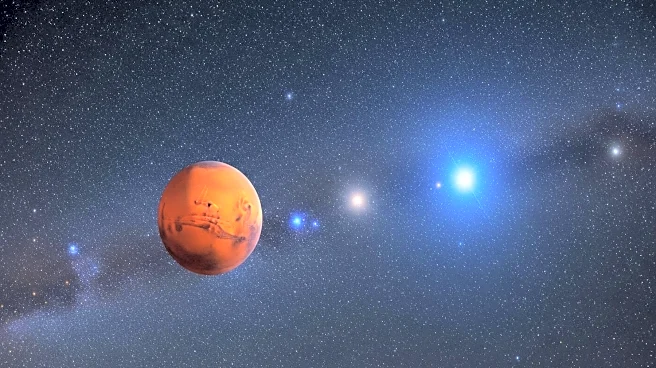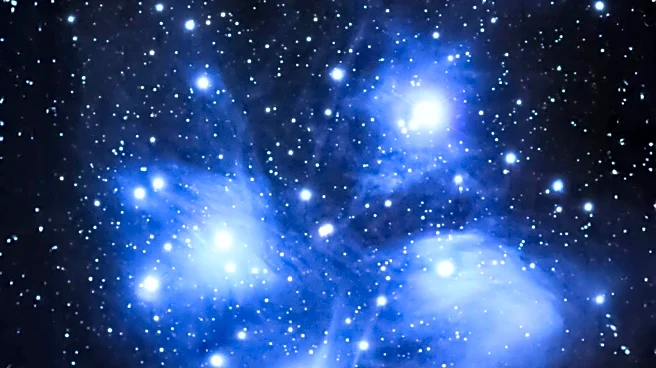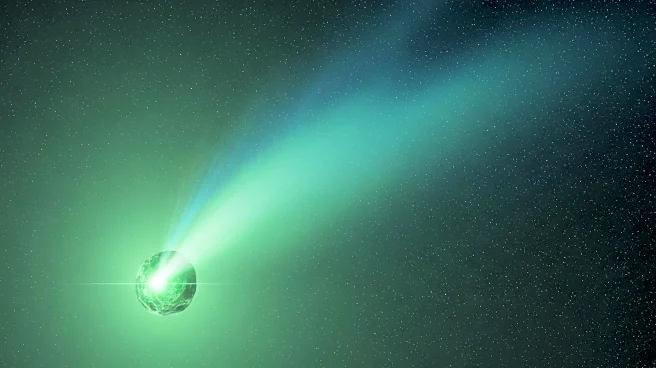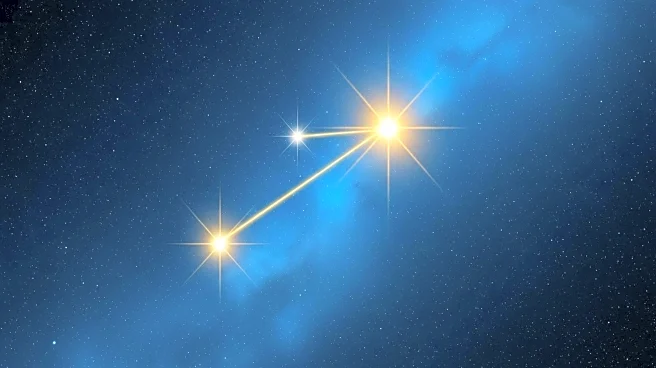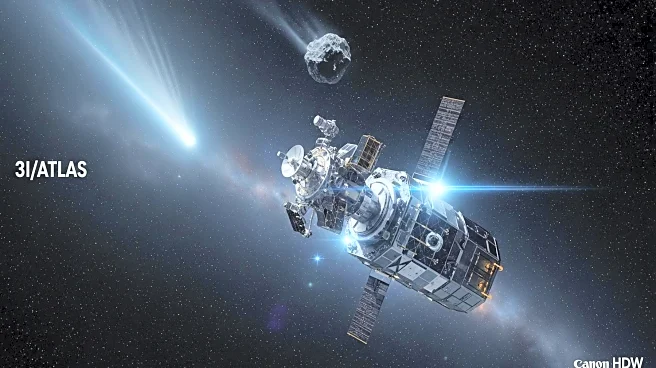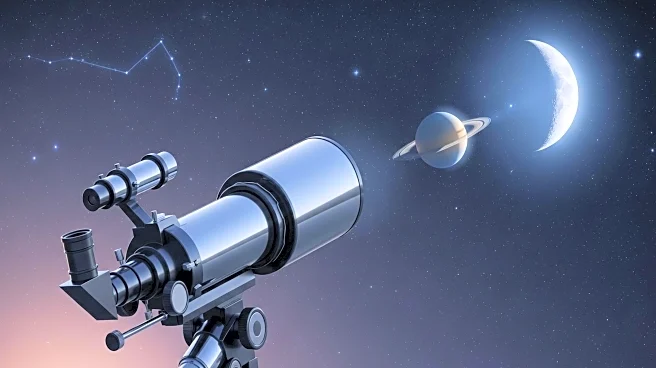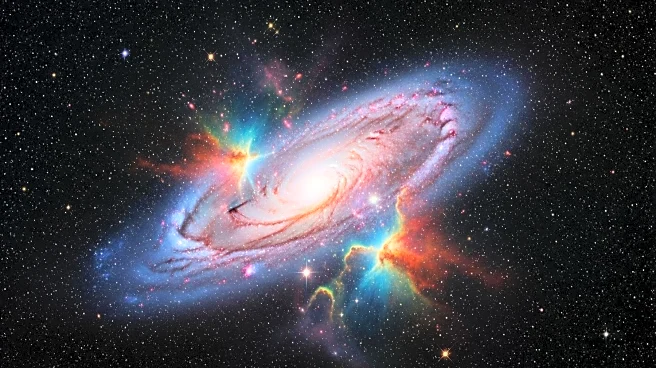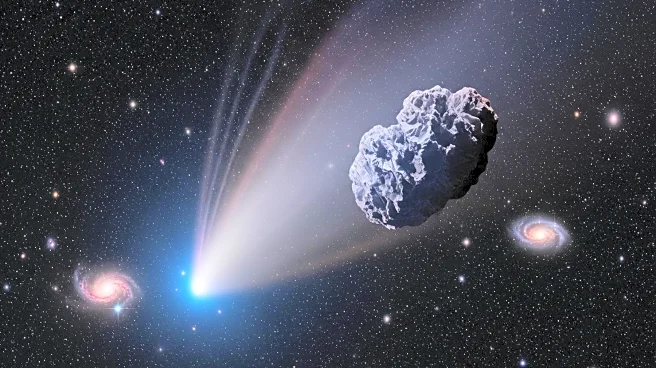What's Happening?
Mars and the bright star Spica will appear in close proximity in the evening sky on September 12, offering a celestial spectacle for observers. The two celestial bodies will be separated by 2 degrees and visible shortly after sunset in the western sky. Observers are advised to use binoculars or a telescope's finder scope for optimal viewing. The waning gibbous Moon will also pass near Uranus, adding to the evening's astronomical events. This alignment provides a unique opportunity for stargazers to observe planetary and stellar interactions.
Why It's Important?
The alignment of Mars and Spica offers a chance for the public to engage with astronomy and appreciate the dynamics of the night sky. Such events can enhance public interest in space science and encourage educational activities related to astronomy. Observing planetary alignments can also provide insights into the movements and positions of celestial bodies, contributing to a broader understanding of our solar system. This event underscores the importance of public engagement in science and the role of astronomy in inspiring curiosity and wonder.
What's Next?
Observers are encouraged to take advantage of the clear skies and favorable conditions to view the alignment. As Mars continues its orbit, it will eventually reach solar conjunction, moving to the opposite side of the Sun from Earth. Stargazers can look forward to future celestial events and continue to explore the wonders of the night sky.
